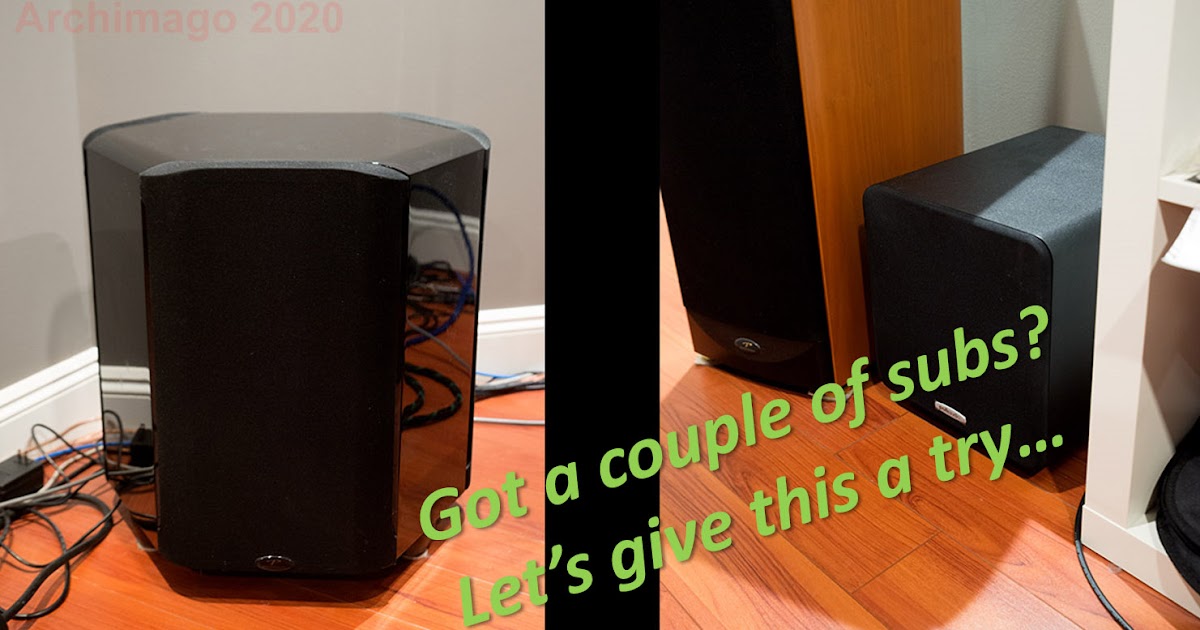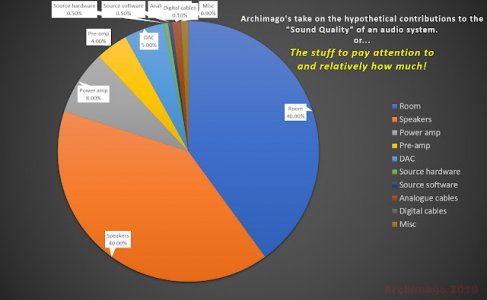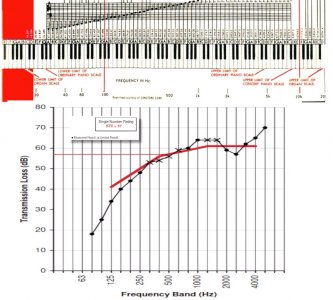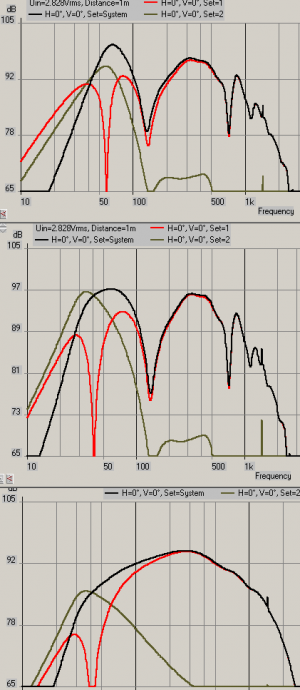So, is the room the most important component?
Don’t give up because your room is suboptimal — almost all of them are — and chances are very high that you can and will still get amazing sound.
Archimago says “ it seems like the article is basically saying that we can rearrange our gear or perhaps treat our rooms in ways that sound good, thus making the room less important than a general consensus might suggest. There seems to be an undertone of trying to downplay the role of the sound room and suggesting that one can spend more money on high quality gear and still benefit. OK, sure, to some extent that's true; but there are obviously limits. After all, if the room is way too small, cubical, highly reflective and impractical to treat, speakers inappropriately shoved deeply against walls, or if there is no space behind the seating position, there's obviously no point spending $$$$ on gear that one can barely appreciate! In my opinion, the quality and size of the room and quality of the gear (especially speakers) should be reasonably balanced.
IMO, without doubt, the room does play a major role in the sound quality; I think it would be silly to suggest otherwise even though I have heard some completely deny this over the years! For example, objectively we can easily show the nodes (nulls) and antinodes (peaks) resulting from reflections and standing waves in our small domestic listening rooms. Subjectively, these effects/limitations are easily audible as well. The way we arrange the speakers will interact with the inherent properties of our listening room in ways much more significant than much of the concerns "hardware audiophiles" often speak of or obsess over (like which CD player/DAC/streamer/server we use, cable differences, or if jitter even is audible .”
.”

 archimago.blogspot.com
archimago.blogspot.com
“So, is the room the most important component? Nope. But feel free to argue” ( after taking a look at this):

 parttimeaudiophile.com
parttimeaudiophile.com
Don’t give up because your room is suboptimal — almost all of them are — and chances are very high that you can and will still get amazing sound.
Archimago says “ it seems like the article is basically saying that we can rearrange our gear or perhaps treat our rooms in ways that sound good, thus making the room less important than a general consensus might suggest. There seems to be an undertone of trying to downplay the role of the sound room and suggesting that one can spend more money on high quality gear and still benefit. OK, sure, to some extent that's true; but there are obviously limits. After all, if the room is way too small, cubical, highly reflective and impractical to treat, speakers inappropriately shoved deeply against walls, or if there is no space behind the seating position, there's obviously no point spending $$$$ on gear that one can barely appreciate! In my opinion, the quality and size of the room and quality of the gear (especially speakers) should be reasonably balanced.
IMO, without doubt, the room does play a major role in the sound quality; I think it would be silly to suggest otherwise even though I have heard some completely deny this over the years! For example, objectively we can easily show the nodes (nulls) and antinodes (peaks) resulting from reflections and standing waves in our small domestic listening rooms. Subjectively, these effects/limitations are easily audible as well. The way we arrange the speakers will interact with the inherent properties of our listening room in ways much more significant than much of the concerns "hardware audiophiles" often speak of or obsess over (like which CD player/DAC/streamer/server we use, cable differences, or if jitter even is audible

MUSINGS / MEASUREMENTS: Multiple subwoofers to reduce nulls. The USB/UFO faithful. And thanks for the blind test submissions!
A blog for audiophiles about more objective topics. Measurements of audio gear. Reasonable, realistic, no snakeoil assessment of sound, and equipment.
“So, is the room the most important component? Nope. But feel free to argue” ( after taking a look at this):

Is the room the most important component?
Hi-Fi news, gear reviews, and interviews
 parttimeaudiophile.com
parttimeaudiophile.com




